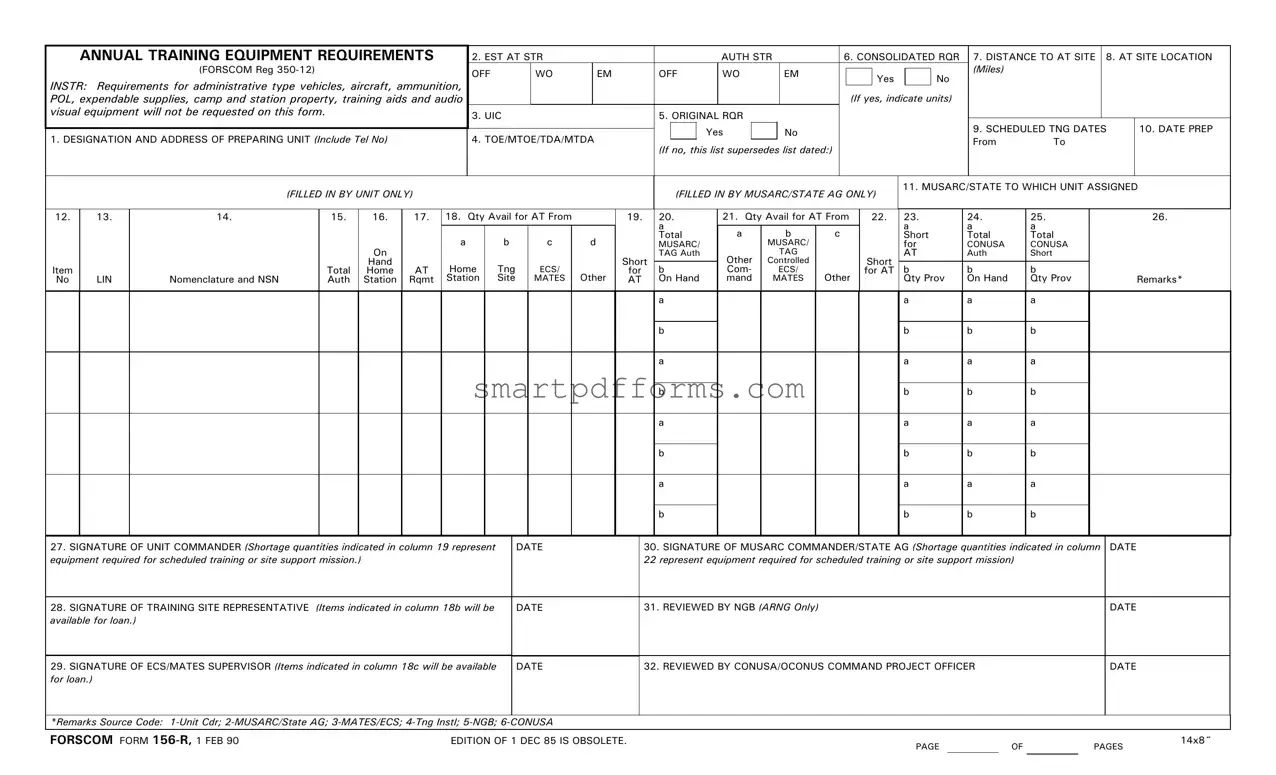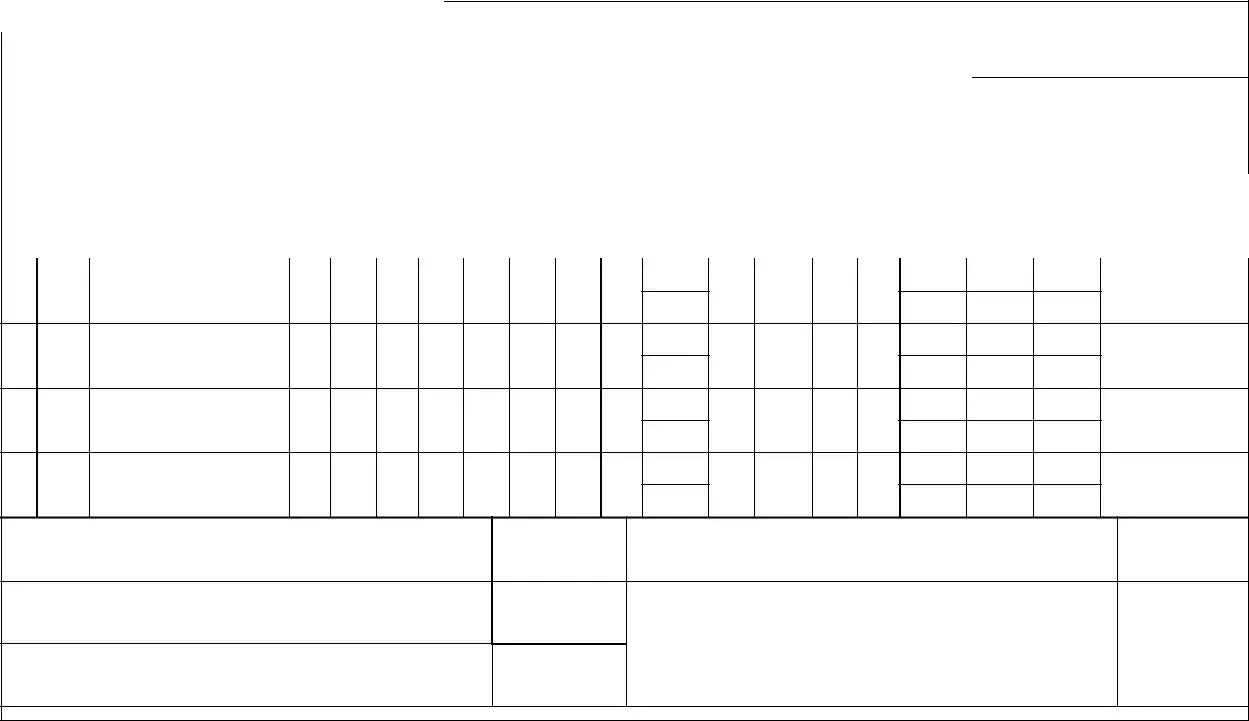The FORSCOM Form 156-R plays a crucial role in the planning and execution of annual training within the United States Army. This document is designed to streamline the process of requesting and allocating the equipment necessary for effective training programs. By outlining specific requirements for administrative type vehicles, aircraft, ammunition, POL (Petroleum, Oils, and Lubricants), expendable supplies, camp and station property, training aids, and audio-visual equipment, the form ensures that all units are adequately prepared for their training objectives. Key elements of the form include the designation and address of the preparing unit, unit identification code (UIC), TOE/MTOE/TDA/MTDA (Table of Organization and Equipment/Modification Table of Organization and Equipment/Table of Distribution and Allowances/Modification Table of Distribution and Allowances), original and consolidated equipment requests, as well as the distance to and location of the training site. Furthermore, the form details the availability of equipment, scheduling dates for training, and the assignment of units to specific state and military commands, facilitating a comprehensive overview of resources and requirements. Signatures from unit commanders, training site representatives, ECS/MATES supervisors, and military command/state adjunct generals (AGs) validate the documentation, emphasizing the collaborative effort required to support military training endeavors efficiently.

